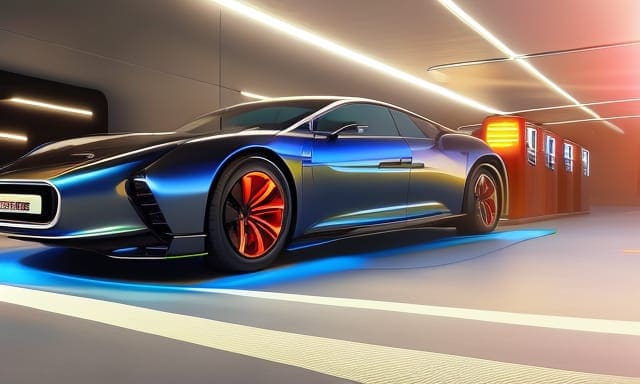Introduction to EV Charging Infrastructure
Gone are the days of worrying about running out of charge on your electric vehicle (EV) during a long road trip. The electric vehicle charging infrastructure has transformed travel, making it more convenient and eco-friendly.
In this article, we’ll take a deep dive into the world of EV charging infrastructure, its history, the challenges faced in its expansion, and the innovative solutions that have emerged. We’ll also explore the positive and negative effects of the growing EV charging network. So buckle up and get ready for an electrifying journey!
From home charging stations to public fast-charging networks, the options for EV charging are expanding rapidly. This growth is essential to support the increasing number of EVs on the road and encourage more people to switch from gas-powered vehicles.
The development of advanced charging technology and the expansion of charging infrastructure have played a crucial role in making long-distance travel more convenient for EV owners. Let’s start by looking at the history and evolution of EV charging.
The History and Evolution of EV Charging
Early Beginnings
Believe it or not, electric vehicles date back to the late 19th century. However, the lack of a reliable charging infrastructure hindered their widespread adoption. Fast forward to the 21st century, and things have changed dramatically.
The Rise of Public Charging Networks
Public charging networks started to gain momentum in the early 2010s, with companies like Tesla, ChargePoint, and EVgo leading the charge. These networks have since expanded exponentially, making it easier for EV owners to travel longer distances without worrying about finding a charging station.
The Advent of Fast Charging
Fast charging has been a game-changer in the EV charging landscape. With charging times reduced from hours to minutes, long-distance electric vehicle travel has become more practical and enjoyable.
Home Charging Solutions
In addition to public charging stations, home charging solutions have evolved, offering EV owners the convenience of charging their vehicles overnight. These solutions range from simple Level 1 charger to more advanced Level 2 systems.
Challenges Faced in Expanding EV Charging Infrastructure
High Installation Costs
One major hurdle in expanding the EV charging infrastructure is the high cost of installing charging stations. This can be particularly challenging for rural areas and smaller businesses.
Grid Capacity Constraints
The growing demand for EV charging can strain the electrical grid, especially during peak hours. This challenge calls for smarter grid management solutions and investments in grid infrastructure.
Standardization and Compatibility
The EV charging market has seen multiple charging standards and connectors, which can lead to compatibility issues for EV owners. Standardization is needed to ensure seamless charging experiences across different networks.
Solutions and Innovations in EV Charging Infrastructure
Government Support and Incentives
Governments worldwide increasingly recognize the importance of EV charging infrastructure in promoting sustainable transportation. As a result, they’re offering incentives, grants, and tax breaks to support the installation of charging stations.
Public-Private Partnerships
Public-private partnerships have emerged as a viable solution to expand charging infrastructure. Governments can leverage their resources and expertise by collaborating with private companies to develop charging networks more efficiently.
Wireless Charging and Battery Swapping
Innovative wireless charging and battery swapping are potential alternatives to traditional plug-in charging. These technologies can further enhance the convenience and accessibility of EV charging.
Smart Grid Integration
Integrating EV charging infrastructure with smart grid technology can help manage grid capacity constraints. This approach enables more efficient energy distribution and can even leverage renewable energy sources to power EVs.
Positive and Negative Effects of EV Charging Infrastructure Expansion
The Positive
- Reduces range anxiety, making long-distance EV travel more feasible
- Encourages the adoption of electric vehicles, lowering greenhouse gas emissions
- Stimulates economic growth through job creation and investments in clean energy technologies
The Negative
- It can put a strain on the electrical grid if not managed properly
- Requires significant investments in infrastructure and technology
- Potential compatibility issues between different charging standards and networks
FAQ
How long does it take to charge an electric vehicle?
Are all EV charging stations compatible with every electric vehicle?
How much does it cost to charge an electric vehicle?
Can I charge my electric vehicle at home?
What’s the future of EV charging infrastructure?
- https://www.pwc.com/us/en/industries/industrial-products/library/electric-vehicles-charging-infrastructure.html
- https://www.iea.org/reports/global-ev-outlook-2022/trends-in-charging-infrastructure
- https://theicct.org/decarbonizing/charging-infrastructure/
- https://www.mckinsey.com/industries/public-and-social-sector/our-insights/building-the-electric-vehicle-charging-infrastructure-america-needs








